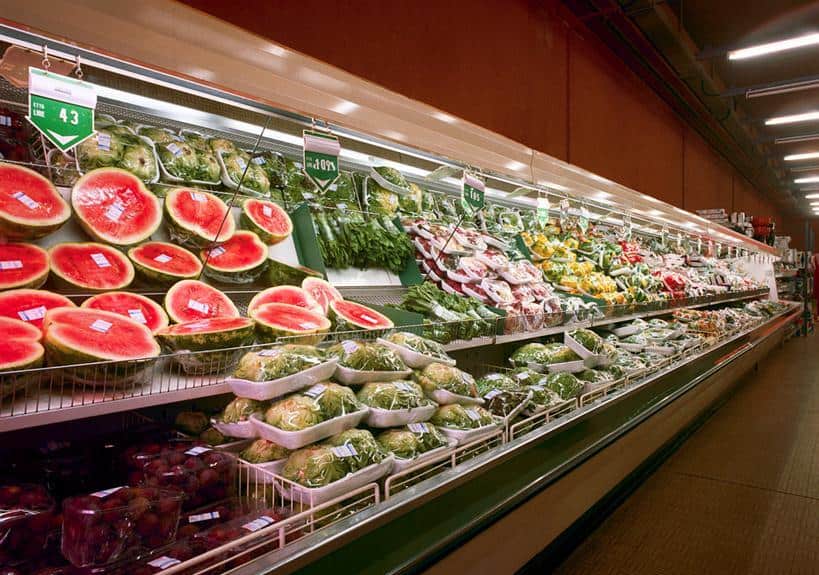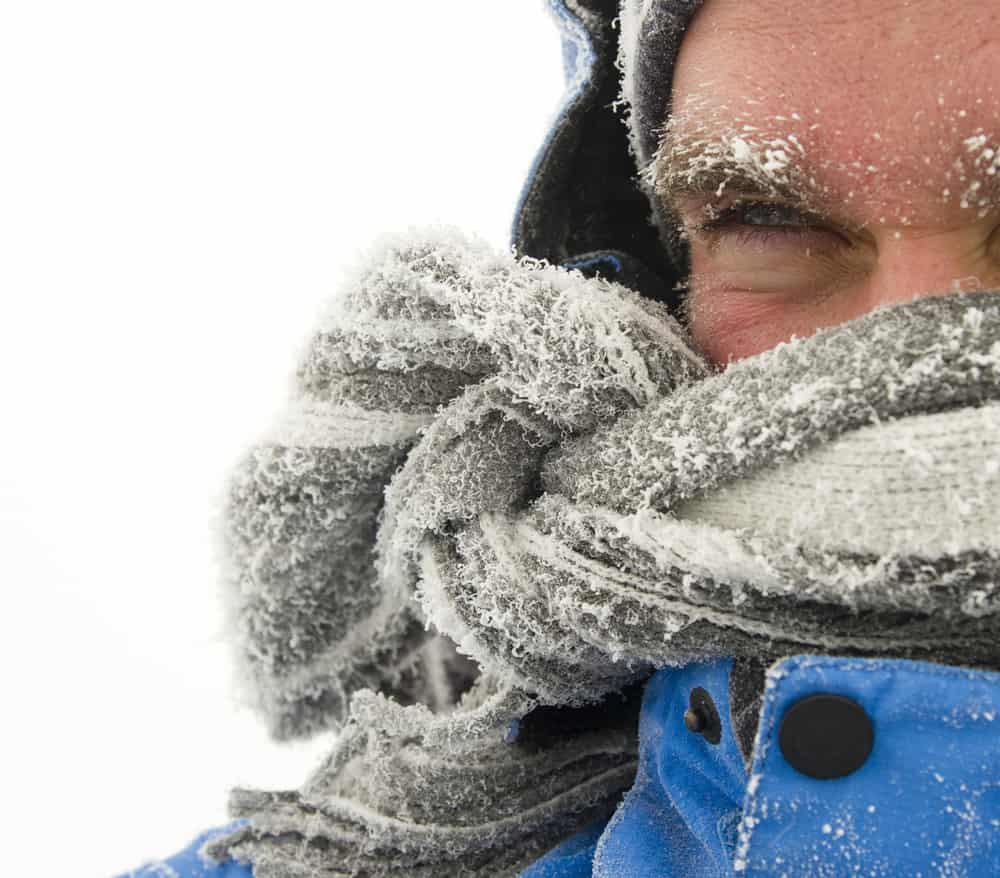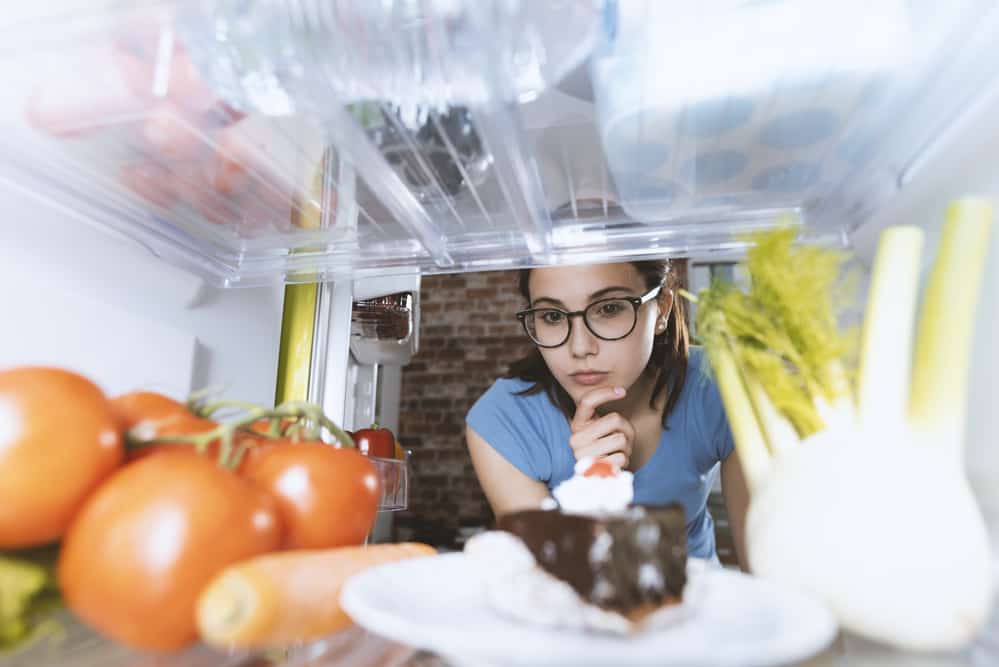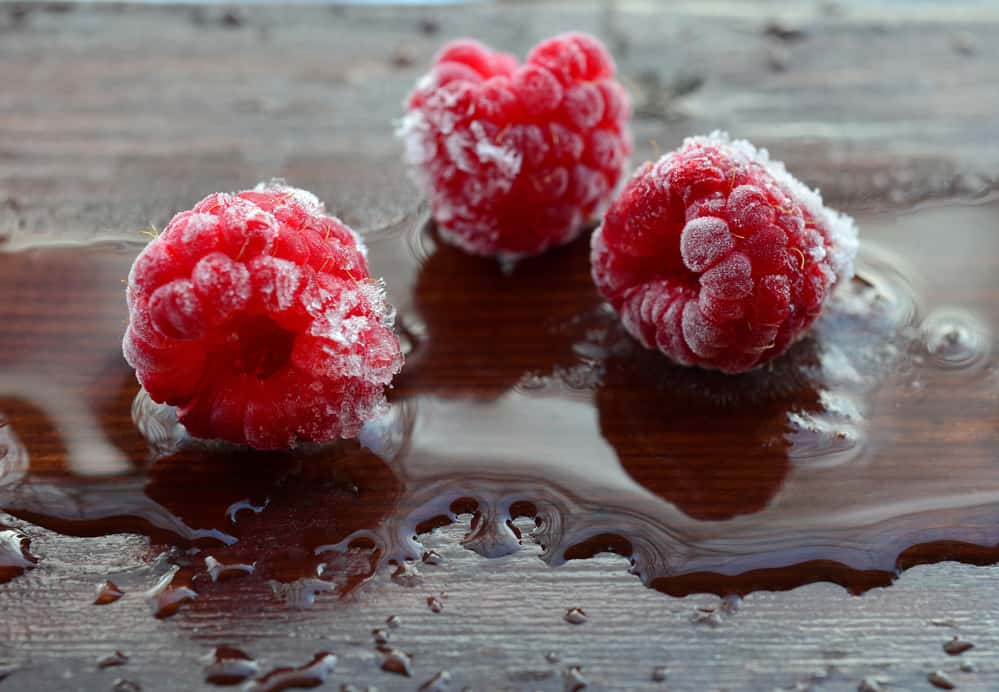The lights begin to flicker. You hear the regular hum of the refrigerator hiccup, then return. But then it all goes dark. Your power is out.

Power outages are common when snow and windstorms take down power lines, or in the summer when power lines can’t handle the increased demand. There are many inconveniences and actual problems caused when your power goes out, but one of the hidden dangers of power outages is the bacteria that will begin growing in perishable foods as they begin to thaw. A little preparation before, during and after the power outage can help you waste less food and save money.
Prepare for the inevitable
If your neighborhood is at risk for power outages during certain times of year, you’d be wise to prepare in advance for the inevitable loss of power. Here’s what you need to do.
Monitor the temperature in your appliance. Newer refrigerators and freezers have a digital display, but if you have an older model, purchase an appliance thermometer to keep in your refrigerator and freezer. This way you can monitor the temperature in your appliances and know if the numbers are getting close to the danger zone. Refrigerator temperatures should be 40 degrees or lower, and freezers should be around zero degrees or lower.
Temperatures tend to be warmer nearest the door because opening and closing allows outside warmer air to enter the appliance. Place your thermometer near the door so you can check temperatures easily and close the door as quickly as possible.
Freeze water in one-quart plastic storage bags or small containers. If your freezer is not packed full of items, fill those empty spots with frozen gel packs, reclosable freezer bags and small containers of frozen water. The solid blocks of ice will help keep food cool in inside your freezer or a well-insulated cooler for 24 hours or more. Keep them small enough to fit around the food in the refrigerator and freezer to help keep food cold.
If you purchase and store more food in the freezer, small containers can be removed and the remaining containers rearranged around the food. If your containers are too big, you will have more trouble filling smaller open spaces that will allow thawing to occur. Don’t fill the bags and containers too full. Because water expands when it freezes, the bags might split.
Freeze refrigerated items such as leftovers, milk and fresh meat and poultry that you may not need immediately. This helps keep them at a safe temperature longer. Label your food items using freezer-safe markers, pencils or labels. That easily recognizable bag of homemade chicken soup turns into a block of bits and colors once it has frozen. The easier it is to identify the frozen food, the faster you can grab it and close the door again, keeping the interior cold and other items safe.
Find out where to buy dry ice or block ice. Before the snow and storm seasons come along, do some research. Find nearby stores that carry dry ice or sell block ice. Once your power goes out, you won’t be able to use the web to find these places, and you will want to keep your driving to a minimum during bad weather.
Have coolers on hand. If the power is out more than four hours, you may need to keep food in smaller coolers. Buy a few extra lightweight portable coolers and store in the basement or garage in case you need them.
Group foods together in the freezer. They form a protective shell or igloo around each other. This helps keeps them cold, and also minimizes your search when you are looking for a particular item.
Keep meats and poultry well-contained in the freezer. Placing meat items on trays or in separate containers seems crazy when the freezer is working properly. But once the power is out, those meats will begin to thaw. Juices or other liquids can leak out and spill onto other foods. This could cause those foods to be contaminated and inedible. Double bagging these meat or poultry items can also reduce the possibility.
Stock up on ready-to-eat foods. Be sure to have a few days’ worth of foods that do not require cooking or cooling. Peanut butter and other nut butters are great backup foods, as are canned pre-cooked meats, roasted and salted whole nuts, crackers and other packaged items. If you are in a rural area, it is important to have a back up plan.
If you live in an area that’s prone to hurricanes, don’t stock up on frozen or perishable foods during hurricane season. Reduce the inventory in your freezer and shop more often.

When the power goes out
Smart thinking can help keep your food fresh once the power goes out.
Keep the refrigerator and freezer doors closed. A properly working refrigerator will keep food cold for about 4 hours, but only if the door is kept closed. If you have prepared as suggested above, you will have packed your freezers full of food or ice-filled containers. Don’t pick this time to reorganize everything. Keep the doors closed and the cool air inside.
A freezer can hold a safe temperature for about two days if it is packed full, but that length of time goes down if it is only half full or there is a lot of space between items. Be aware of this and use up any thawing foods; meats or animal products of any kind are most vulnerable.
Buy dry or block ice if the power is going to be out for a long time. The solid block of ice will help keep food cool in inside your freezer or a well-insulated cooler for 24 hours or more.
Don’t put food outside in the snow. Wild animals are always looking for a free meal, and once they find your stash of food, they will keep coming back for more. This applies even if you are in the city. Instead, tightly pack the snow into small containers to make blocks, or fill reclosable freezer bags with snow (again, packing tightly). Put them in your freezer to help food stay as cold as possible. Icicles can also be packed into bags for use inside the freezers, easily fitting between food packages to minimize the warmer open space.
After an outage
Deciding what to keep and what to toss is both a health decision and a financial one. It’s not worth making yourself or your family sick by eating spoiled food. The general rule, according to the U.S. Department of Agriculture, is that any perishable food that stays over 40 degrees for more than four hours should be tossed.
Here’s a quick guide from the USDA’s Food Safety website:
What to toss. Meats, fish, seafood, poultry, soy meat substitute, eggs, leftovers, milk, yogurt, mayonnaise, lunch meats hot dogs, bacon. Also, soft cheeses such as mozzarella, queso blanco, brie, cottage cheese and any cheese-filled pastries or pies. Also toss leftovers from pre-outage meals.
What to keep. Hard cheeses such as cheddar, Swiss and Parmesan are OK, but not if they’ve been shredded. Fresh, uncut fruits and veggies are safe, unless they are the packaged, pre-washed kind. Fruit juices in glass or plastic bottles or containers are OK to keep, but not juices stored in open cans.
Never taste food to determine its safety. The USDA advises that you can’t rely on appearance or smell to determine whether something is safe for your family to eat.
If you aren’t sure, call the USDA Meat and Poultry Hotline (888-674-6854), assuming you have a working phone that doesn’t depend on electricity to work or recharge.
When in doubt, throw it out. It isn’t worth saving $20 worth of food that could wind up costing 10 times as much in medical bills.
And one final tip: It’s not enough to stock up on batteries before a storm. You should load flashlights with the new ones and keep them handy and easy to find. Consider other ways to make it through a storm, such as generators or battery-operated appliances, such as a portable warming stove that operates from your car’s lighter-type socket..



I remember back in 1983 when Hurricane Alisha hit the Texas Gulf Coast we were without electricity for two weeks. We had just picked five gallons of wild blackberries; which, were in the freezer. My mother made blackberry jelly during that hurricane because she refulsed to allow those berries to spoil!!! We lost a whole calf we had just butchered; but, by golly, we did not lose those berries!!! My point is, you can can the fruits and veggies in your freezer if a power outage is expected to last longer than the food will stay good.